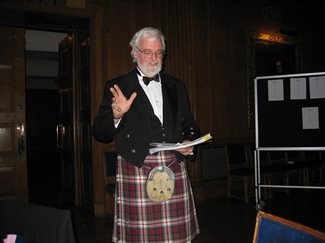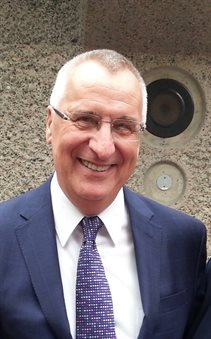“It was very exciting to get the opportunity to do something which was a first for the UK.”
This year marks 21 years of the Graduate Entry Medicine programme (GEP) at St George’s, University of London. To mark this milestone, we will be sharing reflections from staff, students and alumni of the course throughout the year, culminating in an on-site celebration at St George’s. We will also be speaking to the original Graduate Entry Medicine team about how the course has developed over time, and how it felt to see this ground-breaking programme come to fruition.
Open to graduates from a wide range of science and non-science backgrounds, the Graduate Entry Programme at St George’s offers a fast-track route which condenses the first stage of a conventional medical degree, allowing students to achieve the qualification in four rather than five years. Twenty plus years on from the launch of the course at St George’s, there are now several universities across the country offering their own version of the Graduate Entry Medicine programme.
However, when the course launched at St George’s in 2000, it was the first of its kind in the UK.
 At the time, the concept of a fast-track route into Medicine existed in some other countries, such as Australia and Canada. Professor Peter McCrorie - who was a founding member and the original Director of the course - says, “We visited universities in Australia which were running their own Graduate Entry programme when we first started thinking about what our own course would look like. One which really stood out was Flinders University, because it struck us as very community-based, with a real social focus. When designing our own course, we took inspiration from Flinders because it seemed to best reflect the ethos of St George’s.”
At the time, the concept of a fast-track route into Medicine existed in some other countries, such as Australia and Canada. Professor Peter McCrorie - who was a founding member and the original Director of the course - says, “We visited universities in Australia which were running their own Graduate Entry programme when we first started thinking about what our own course would look like. One which really stood out was Flinders University, because it struck us as very community-based, with a real social focus. When designing our own course, we took inspiration from Flinders because it seemed to best reflect the ethos of St George’s.”
“It’s extraordinary to think about how much we achieved in such a short space of time. We were originally aiming to do it all within two years, and it’s incredible to think that it was actually all up-and-running within just one year!”
A development team had originally applied to the General Medical Council (GMC) for a three-and-a-half year course, which was turned down. Professor McCrorie explains, “One member of the panel was the Dean of the University of Leicester, which was actually the first university in the country to offer a Graduate Entry Medicine course. But one key difference at St George’s was that we accepted graduates from all disciplines, not just those from scientific backgrounds. About a third of these students had a background in the Arts and there were students from all walks of life, many of whom had decided to study Medicine following a career in something completely different.”
Reflecting on some of the challenges and rewards of setting up this unique and innovative programme, Professor McCrorie says, “At first, there was some opposition from some of the At George’s faculty to these new, innovative approaches, as well as opposition from the St George’s students who had taken a more traditional route into medicine. Nowadays, Graduate Entry Medicine programmes are widely-accepted but it was such a new concept in those days.
“As the founding team, we were able to experiment with lots of different ideas. There were only around 35 students in the first intake, which allowed us to try out concepts new to St George’s, such as progressive-release PBL, OSCEs and a five-week placement in a training ward. In the early days, a smaller cohort also meant that students could organise their own clinical placements in medicine and surgery.
“As the course has grown, some of the teams’ original ideas have remained and some aspects of the course have changed to accommodate a larger cohort. The modules (Life Support, Life Maintenance, Life Protection, Life Cycle, Life Control and Life Structure) and the themes (Basic and Clinical Sciences, Patient as a Doctor, Community & Population Health and Personal & Professional Development) have all survived, although the themes now have different names.
 St George’s MBBS alumnus, Professor Sean Hilton, was Dean of UG Medicine at the time, and helped select the original team members for the Graduate Entry Programme and helped create a proposal for programme. Reflecting on the time leading up to the approval of the programme, Professor Hilton shares, “During the first phase of implementation, known as the Accelerated Graduate Entry Proposal (AGEP), I reported regularly to Academic Board and initially faced a good deal of challenge to the course proposals. After a few iterations, the GMC gave approval for the four-year course to be developed. From 1999-2004 the group embarked upon the second phase of implementation.
St George’s MBBS alumnus, Professor Sean Hilton, was Dean of UG Medicine at the time, and helped select the original team members for the Graduate Entry Programme and helped create a proposal for programme. Reflecting on the time leading up to the approval of the programme, Professor Hilton shares, “During the first phase of implementation, known as the Accelerated Graduate Entry Proposal (AGEP), I reported regularly to Academic Board and initially faced a good deal of challenge to the course proposals. After a few iterations, the GMC gave approval for the four-year course to be developed. From 1999-2004 the group embarked upon the second phase of implementation.
“The second phase of the programme took place from 1999-2004 with the detailed design and implementation of the curriculum through to the graduation of the first cohort. As we gained additional funding we were able to take on more support staff, and second a number of innovative clinical and bioscience leads, and this became the first Course board.
“2000-2002 was a particularly busy time as we were implementing years Four and Five of a new Five-Year MBBS course as well as Years 1 and 2 of the Graduate Entry Medicine course, so there was a lot going on at once! But it was great fun and very exciting to get the opportunity to do something which was a first for the UK.”